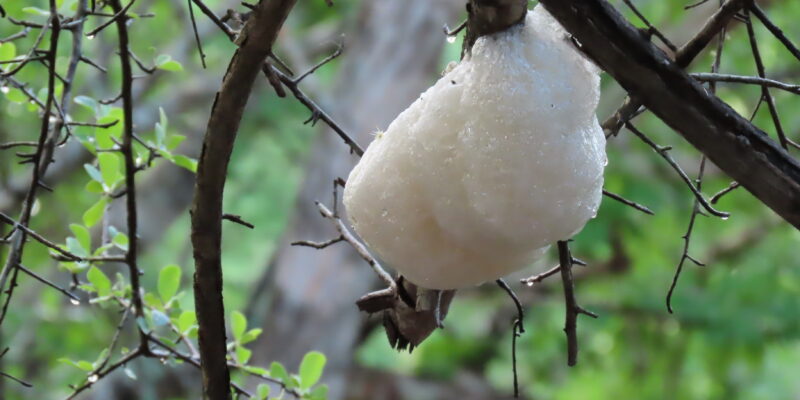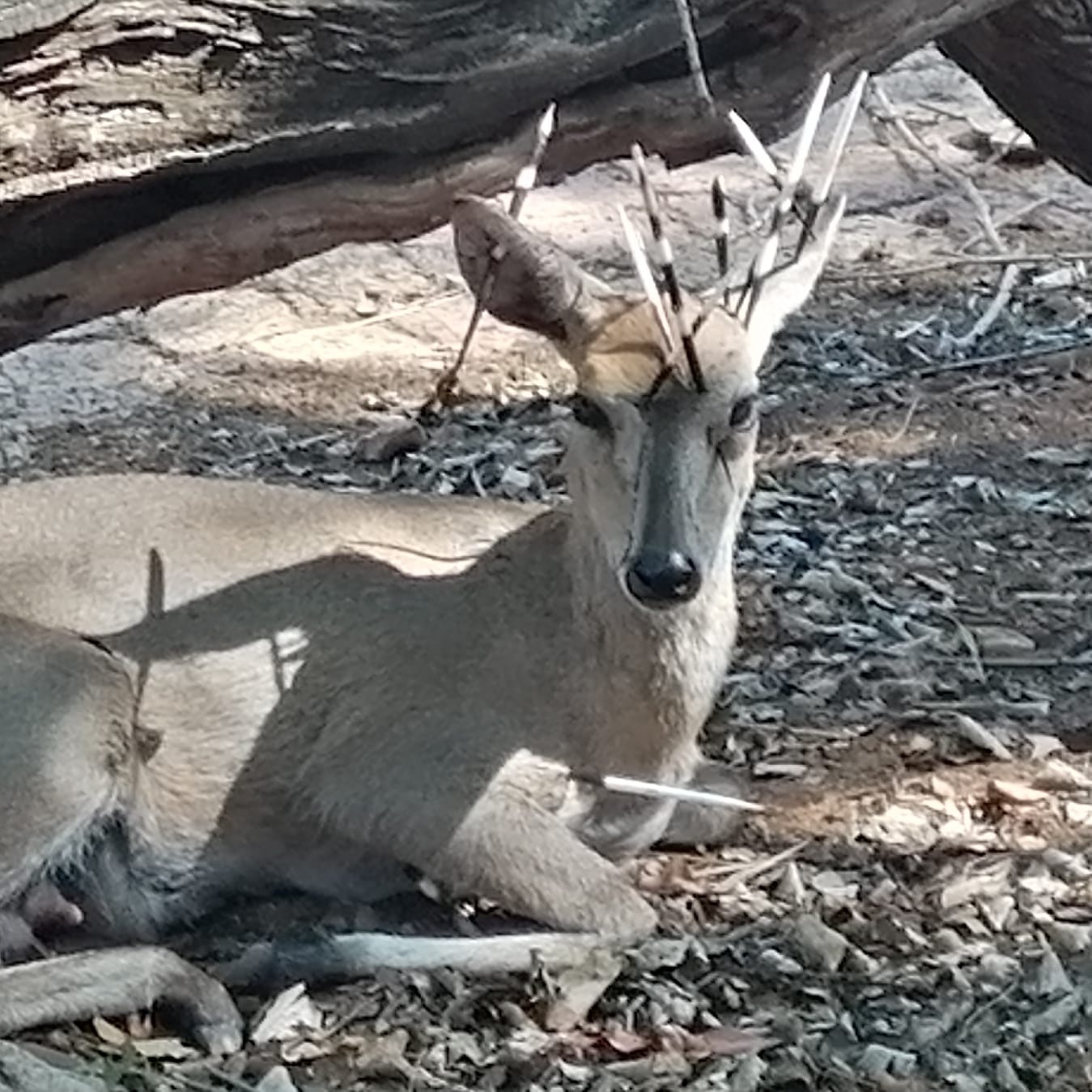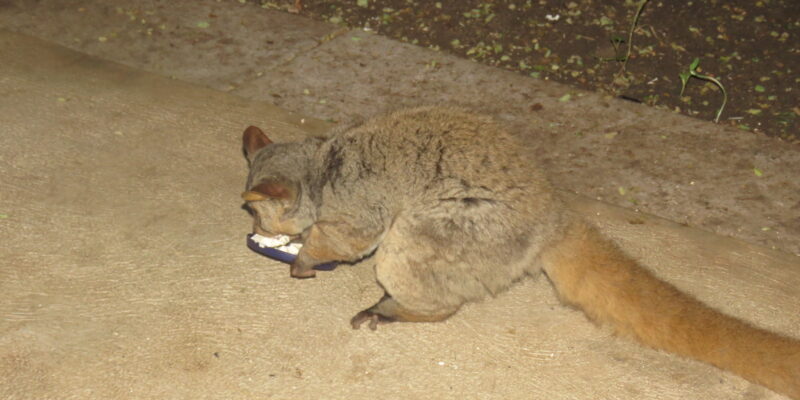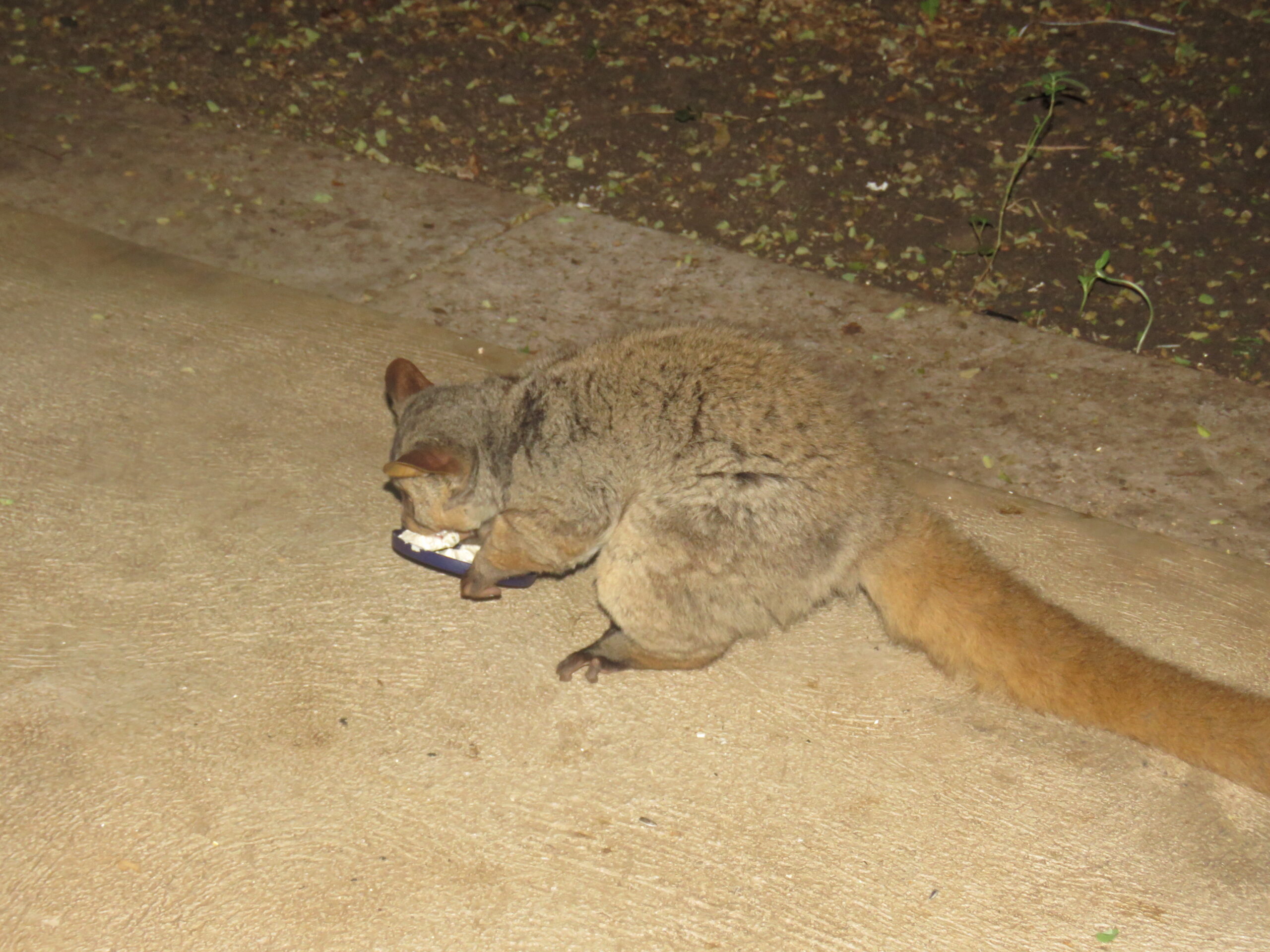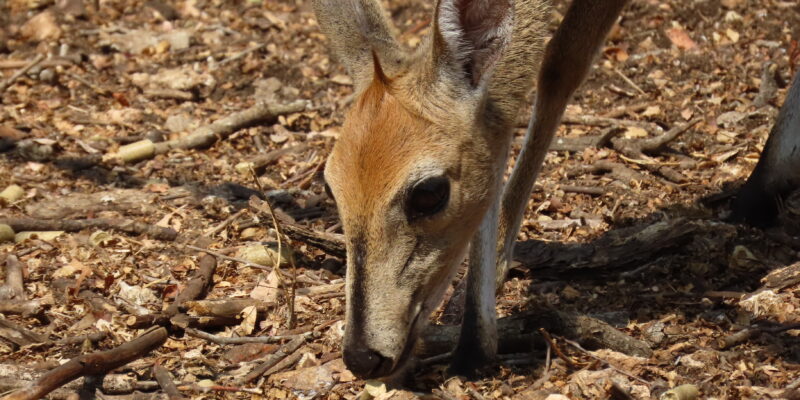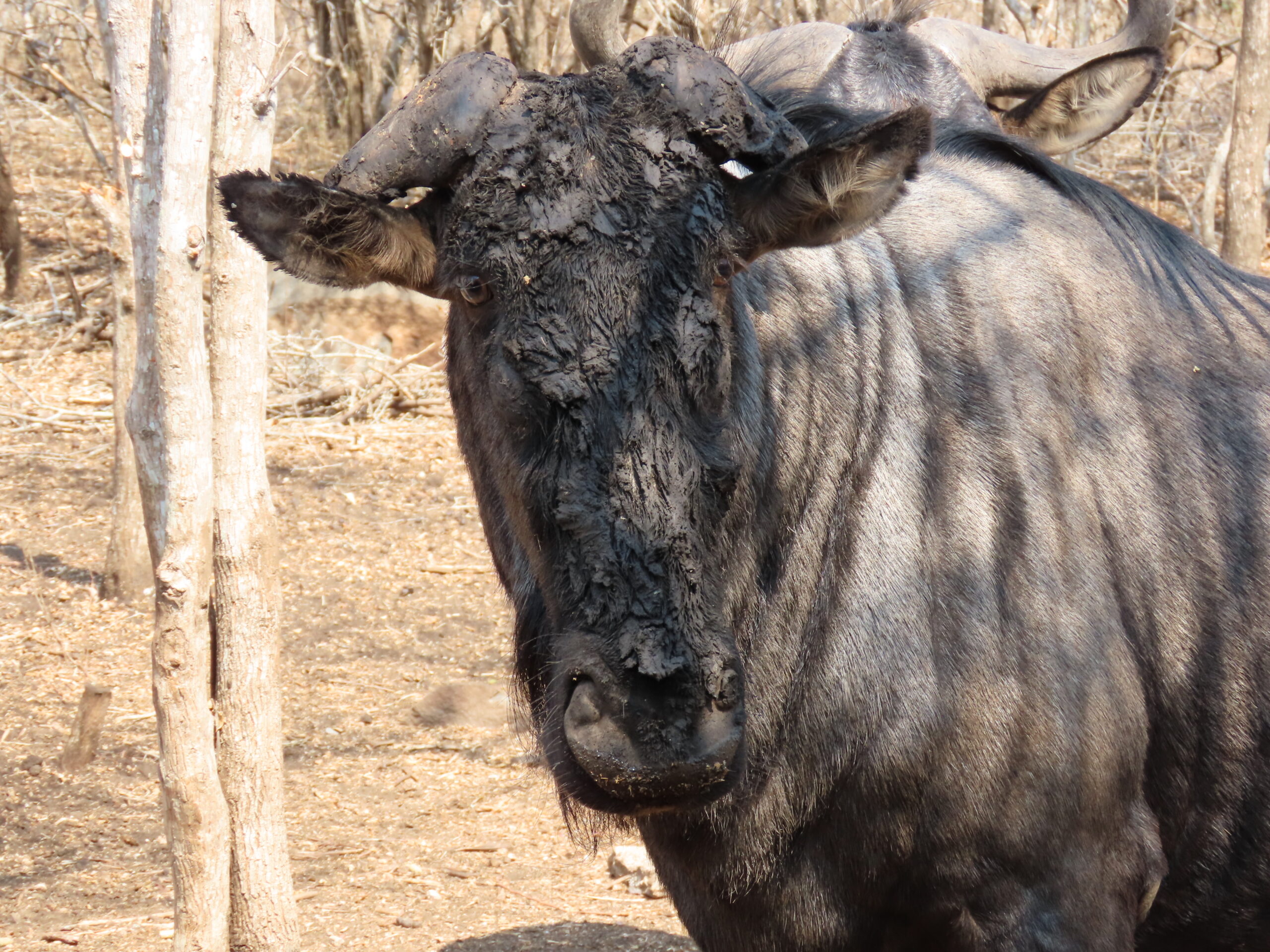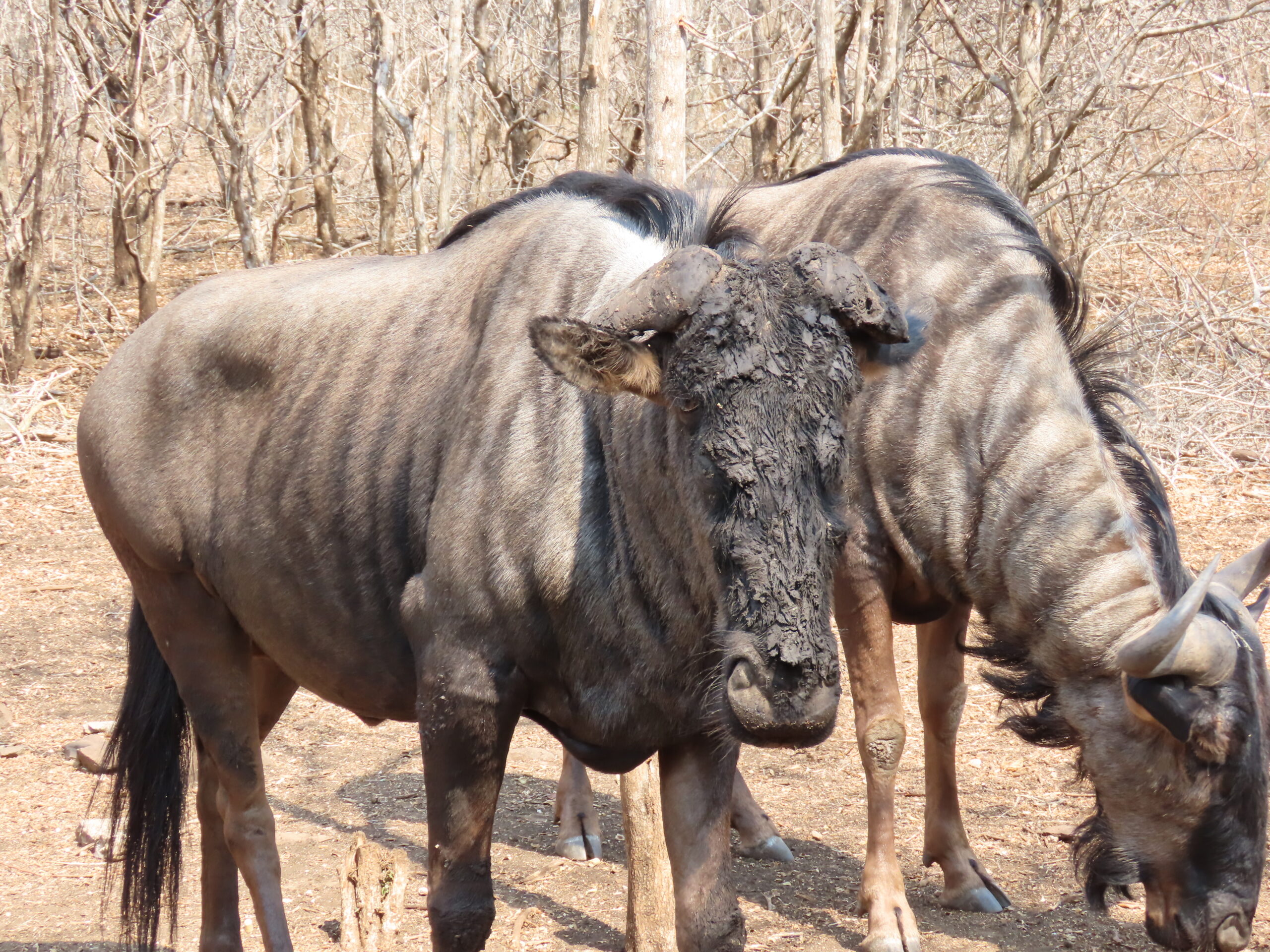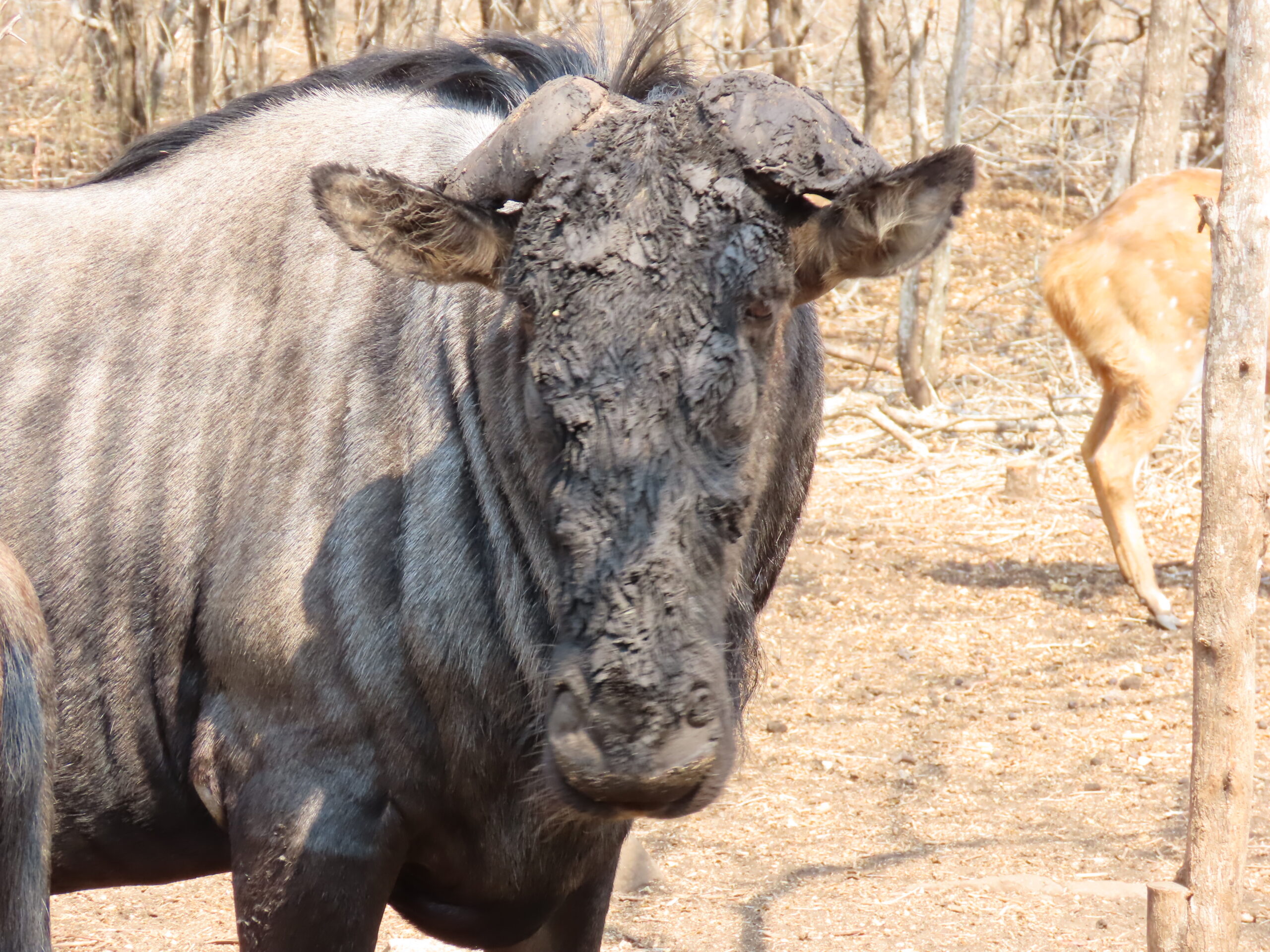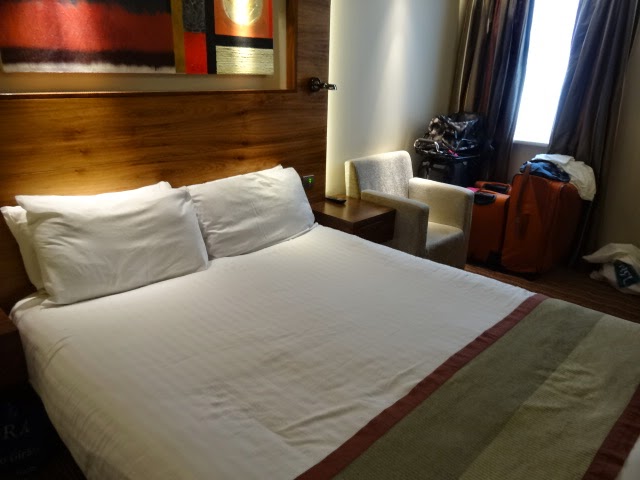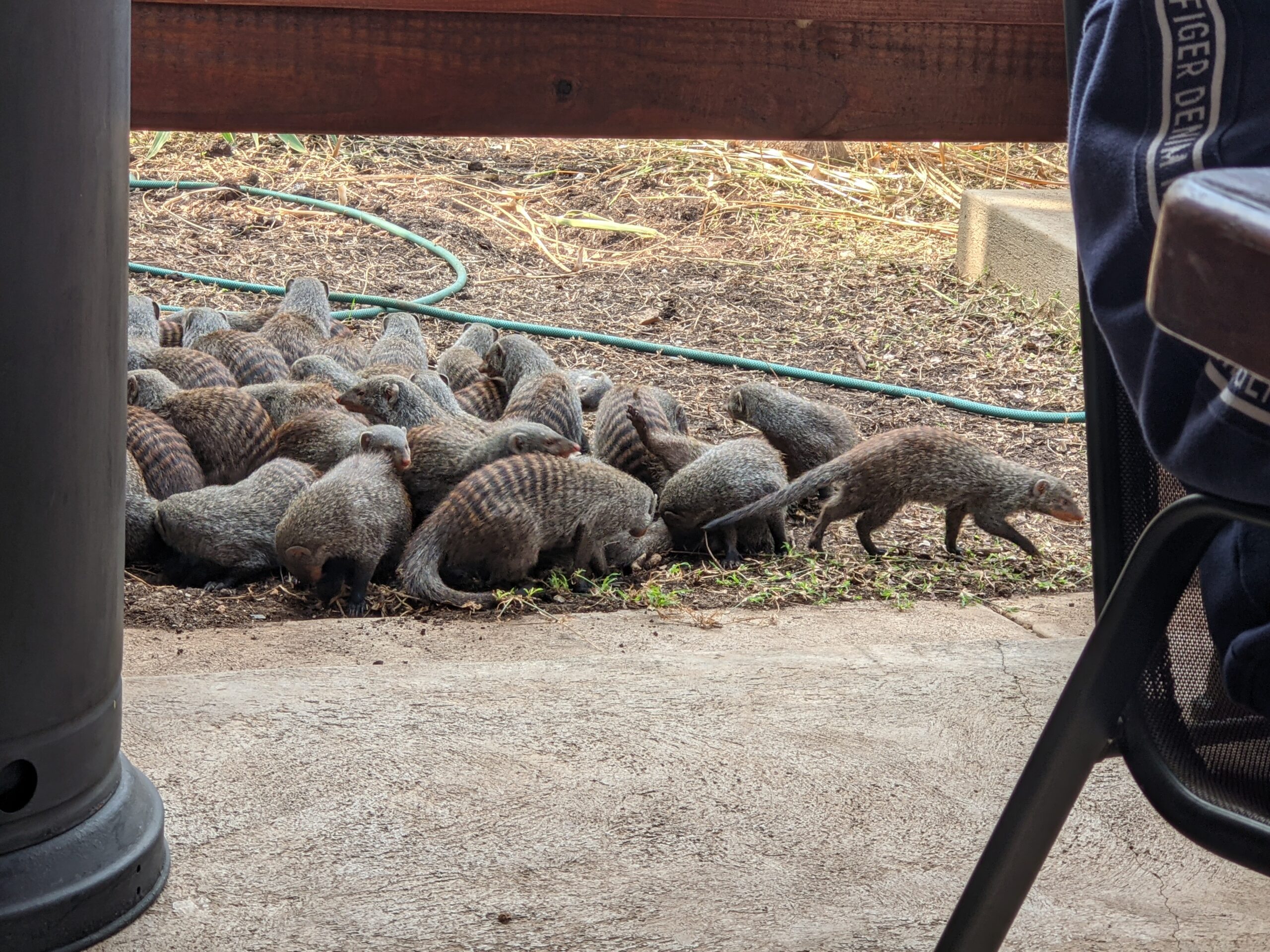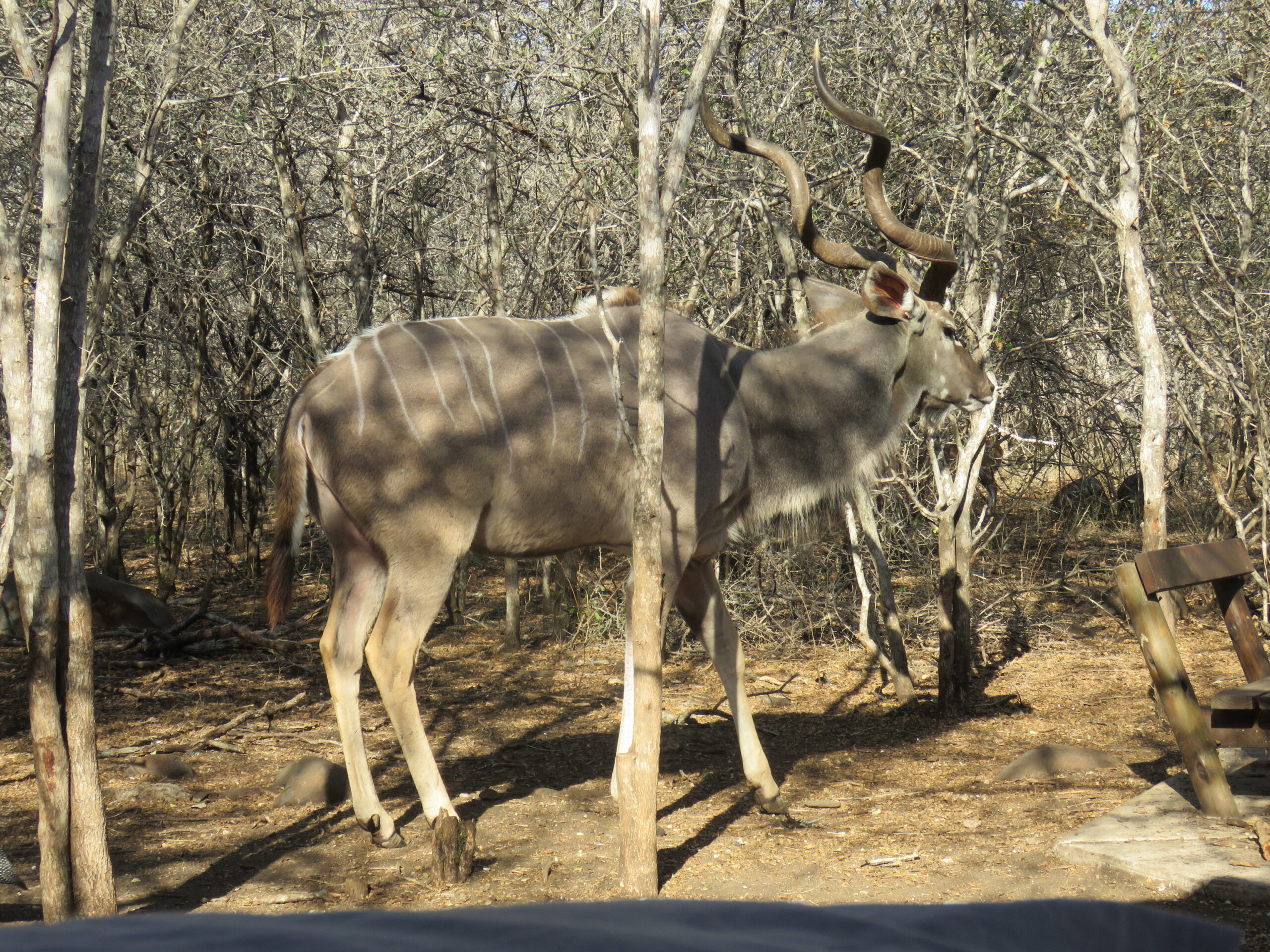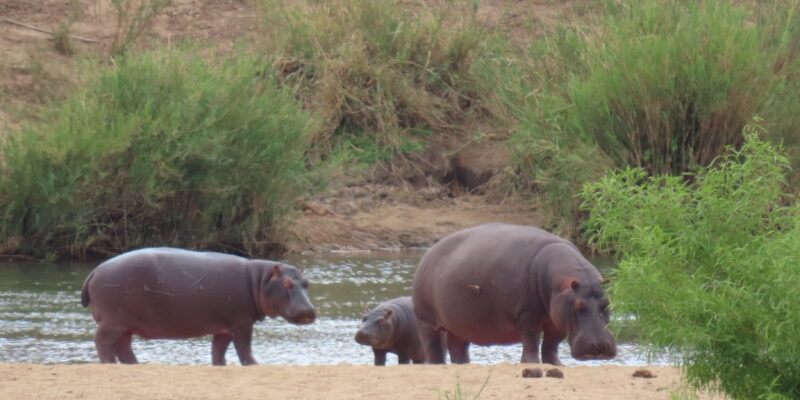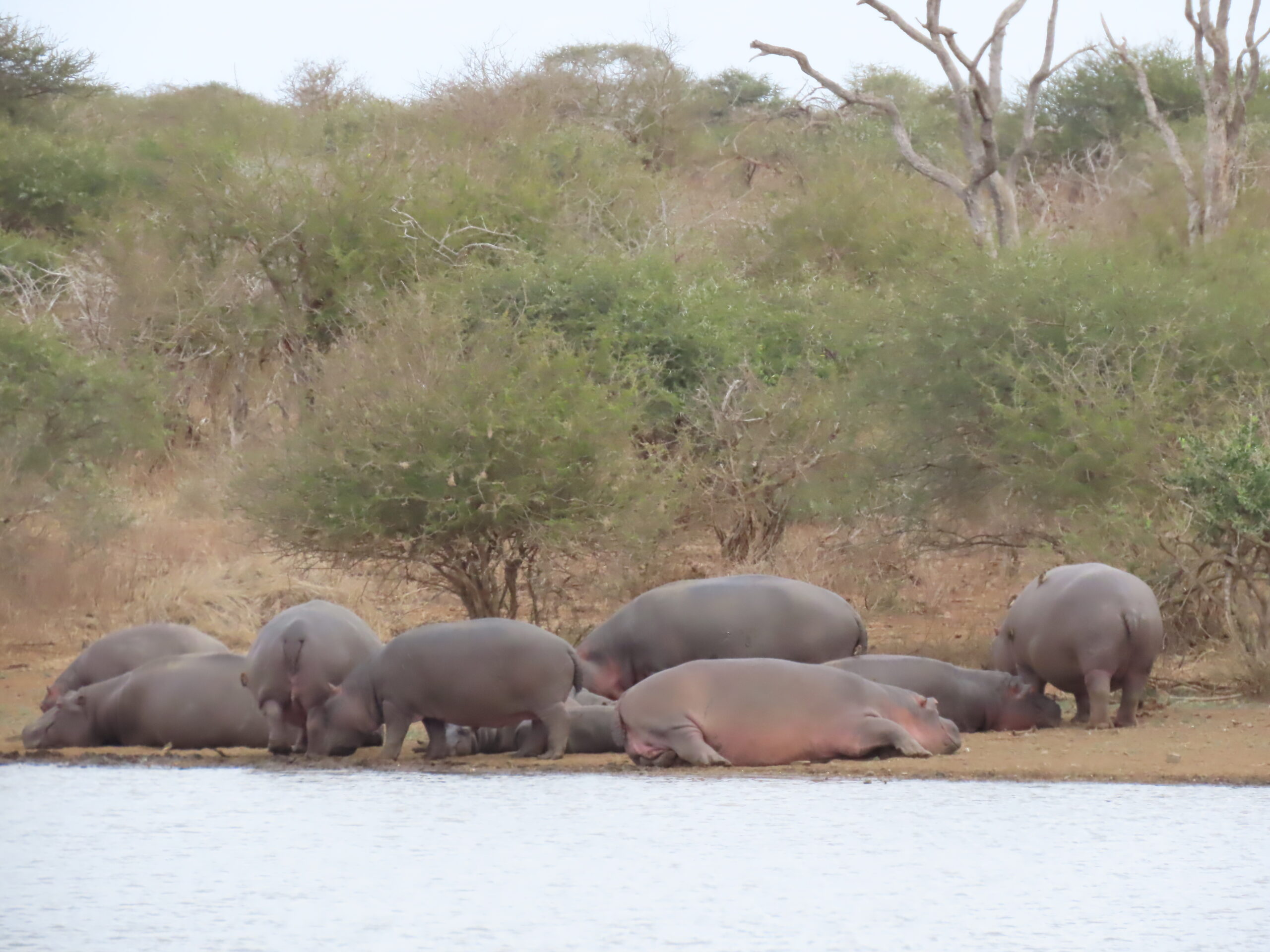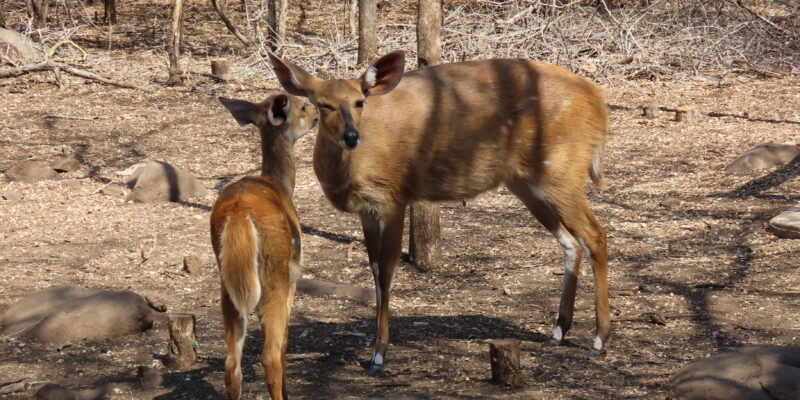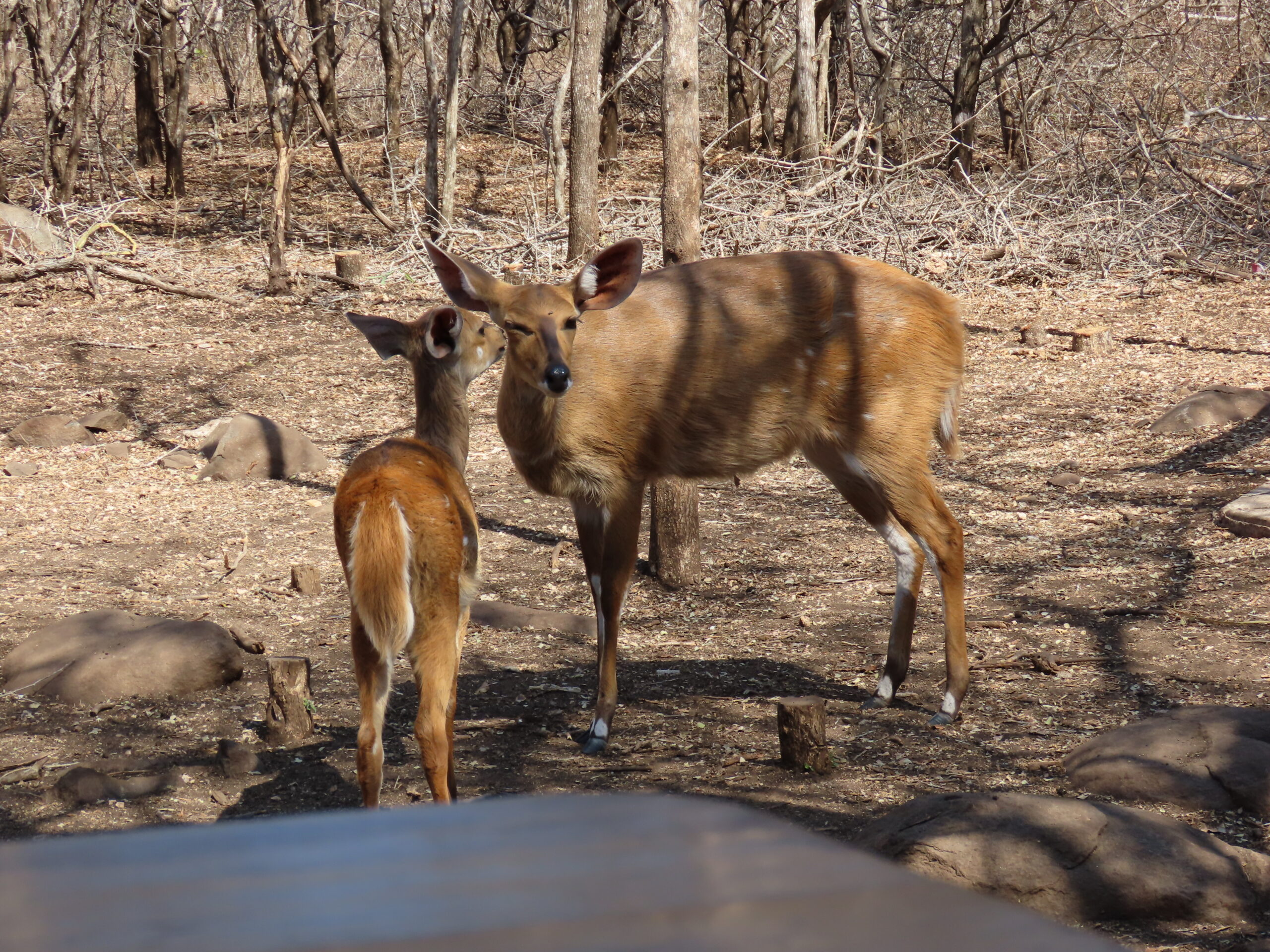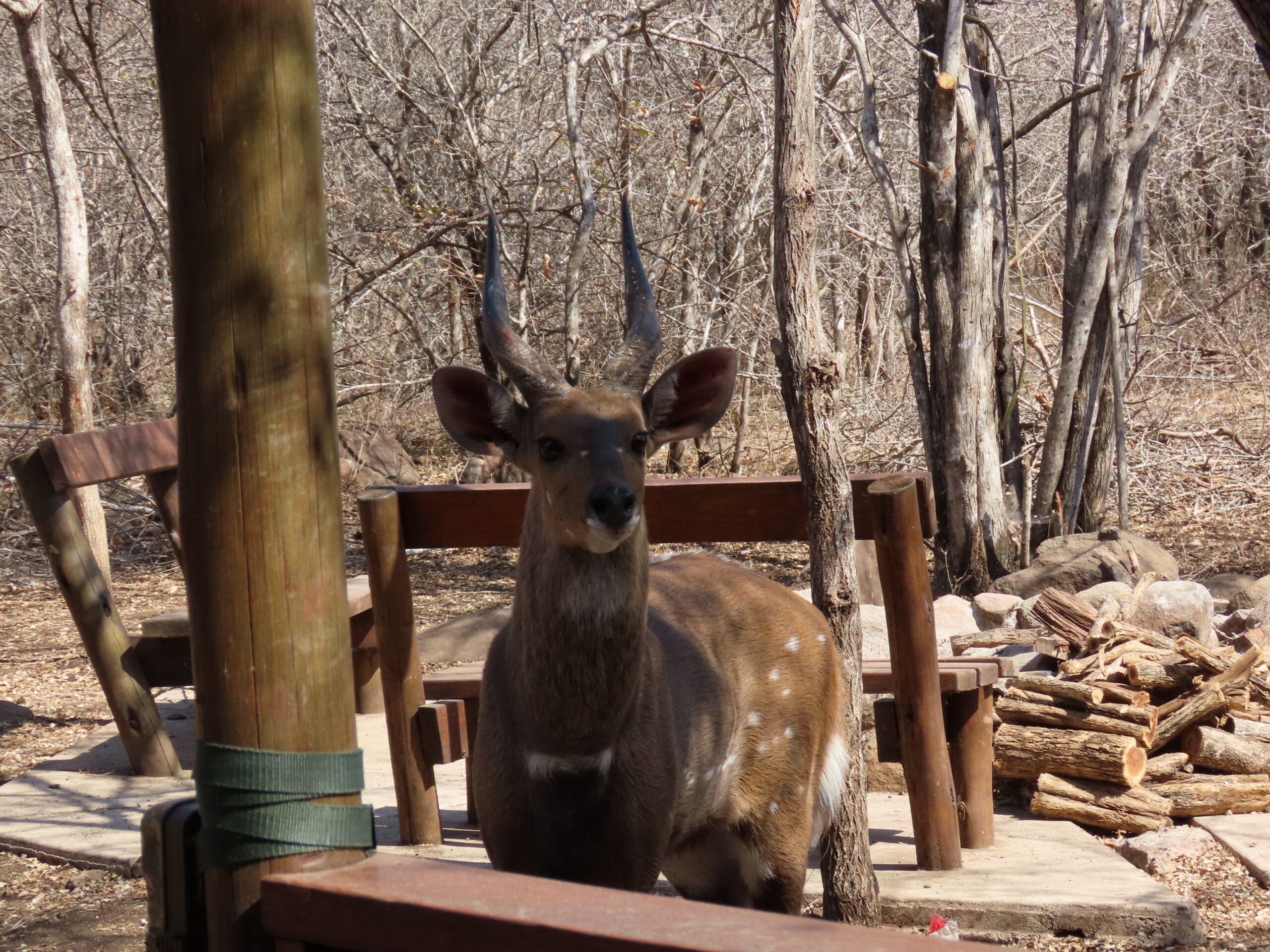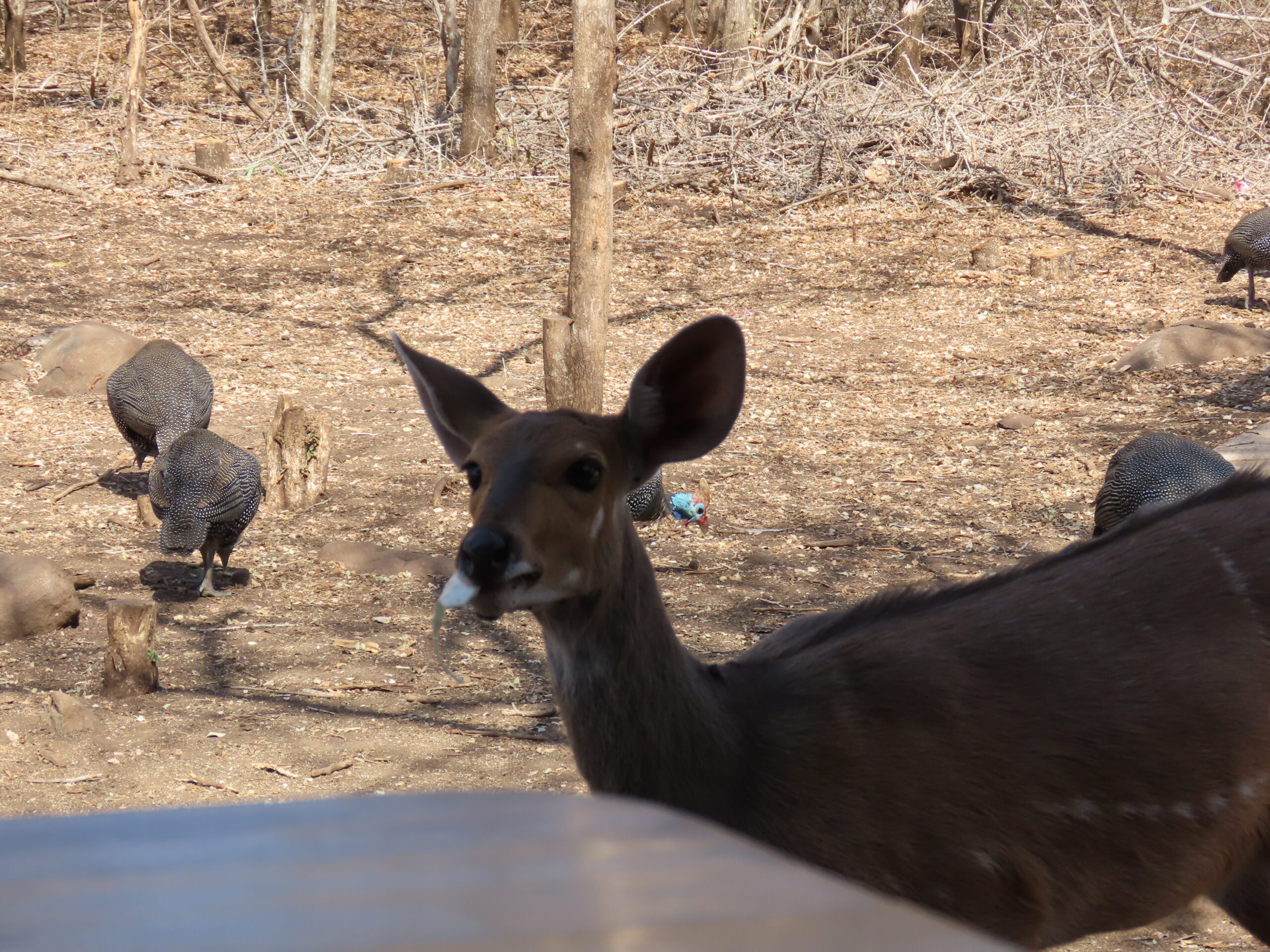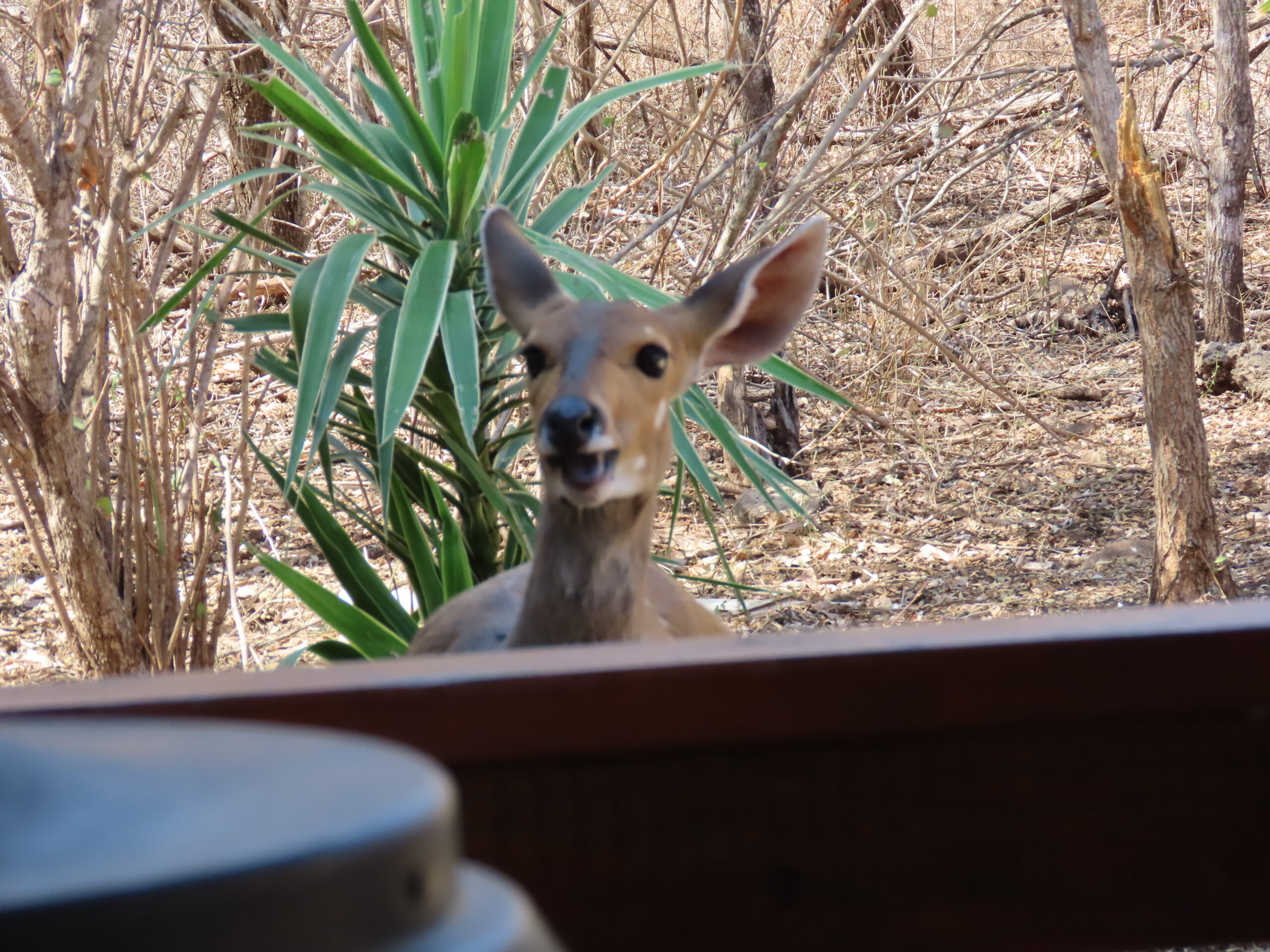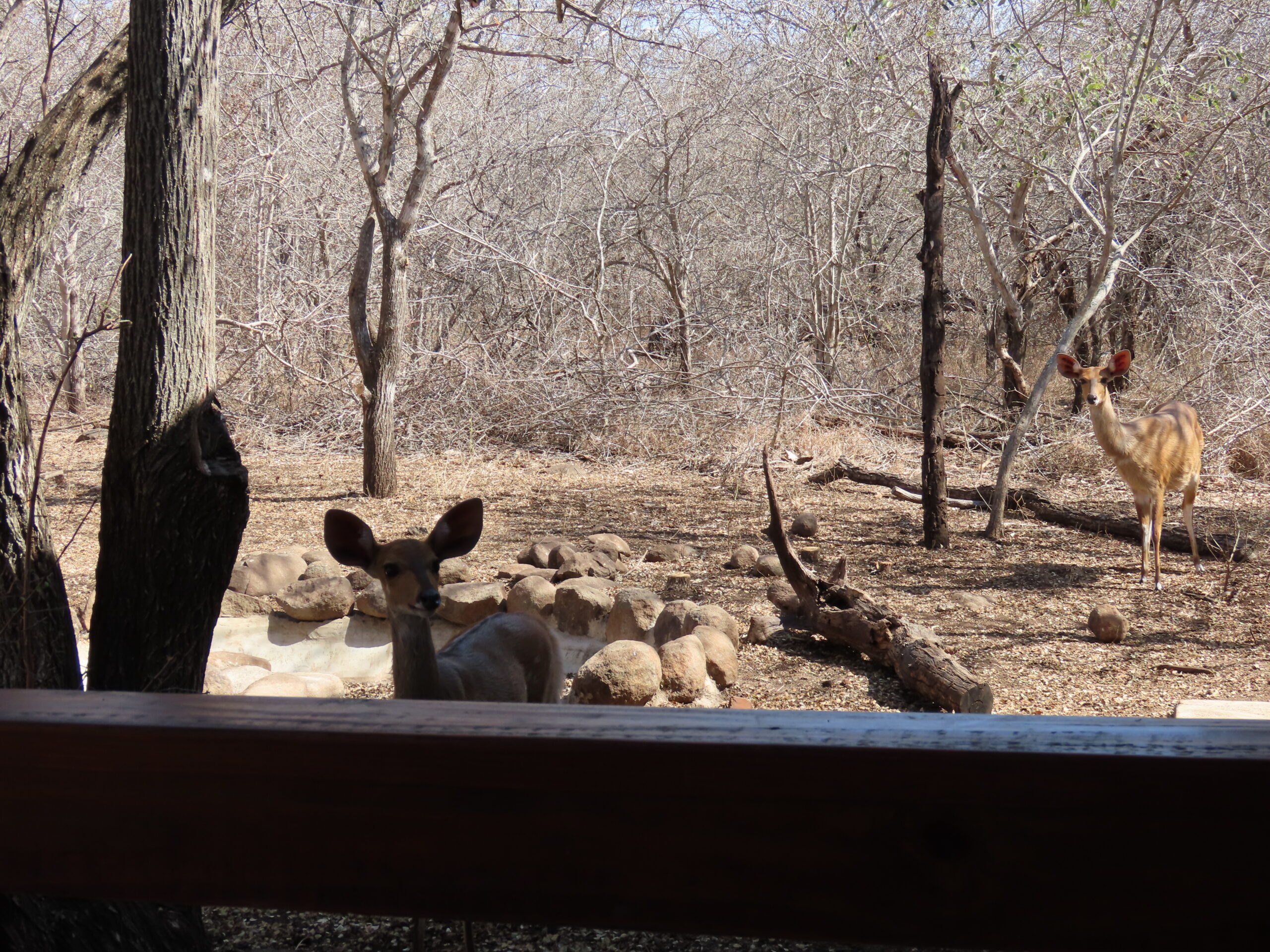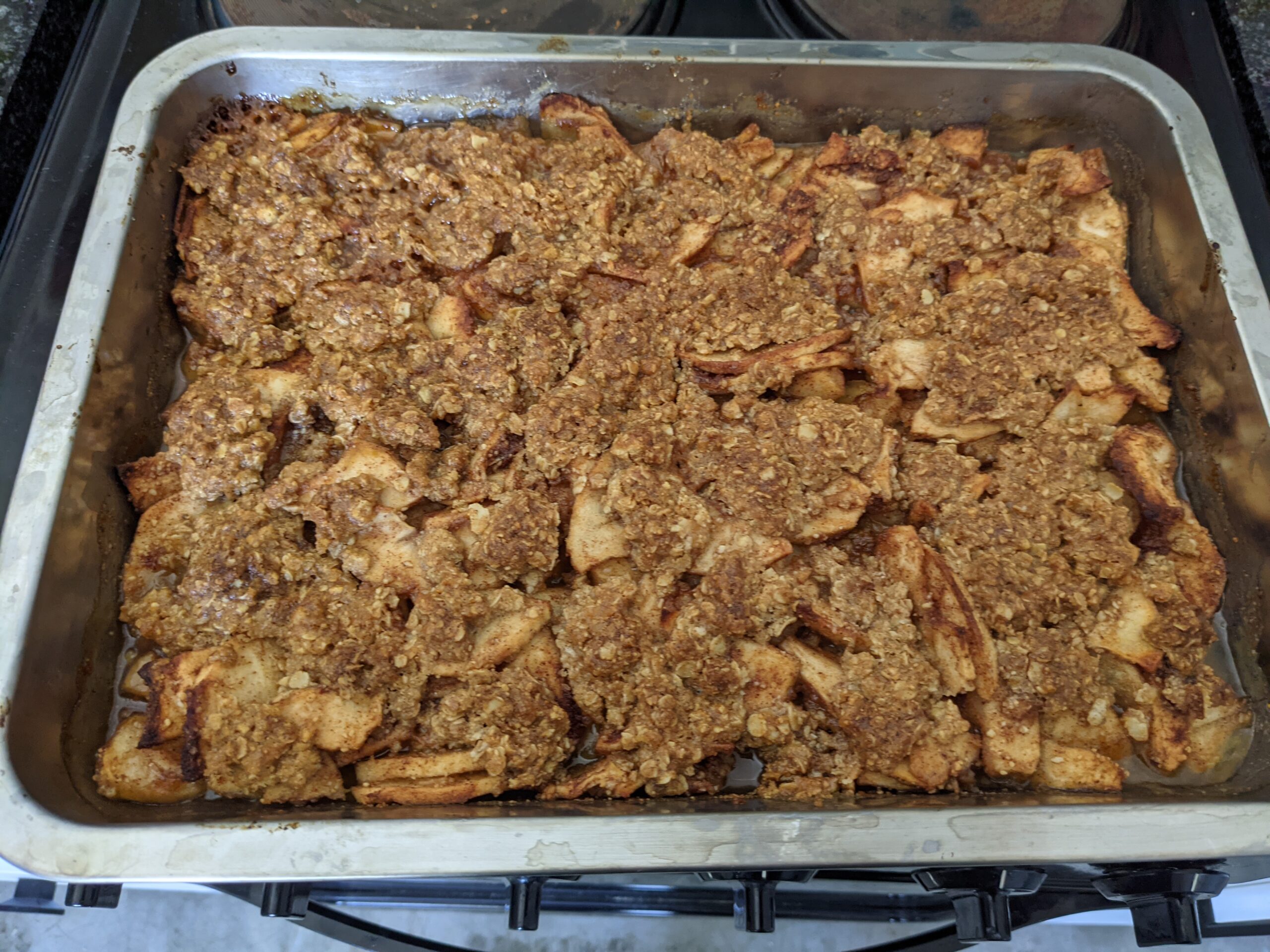
Yesterday afternoon, while situated on the veranda on a rainy day, we happened to look toward the right to the rainwater-filled cement pond. Hanging in the tree was something extraordinary we’d first seen in December 2013 during our first foray to Marloth Park…a tree frog foam nest.
For the details of that sighting, check out our link here, which includes a fascinating video that we’d made when a dozen male tree frogs arrived at the foam nest to fertilize it after the female tree frog made the nest, laying thousands of eggs inside it overnight. How unusual is that?
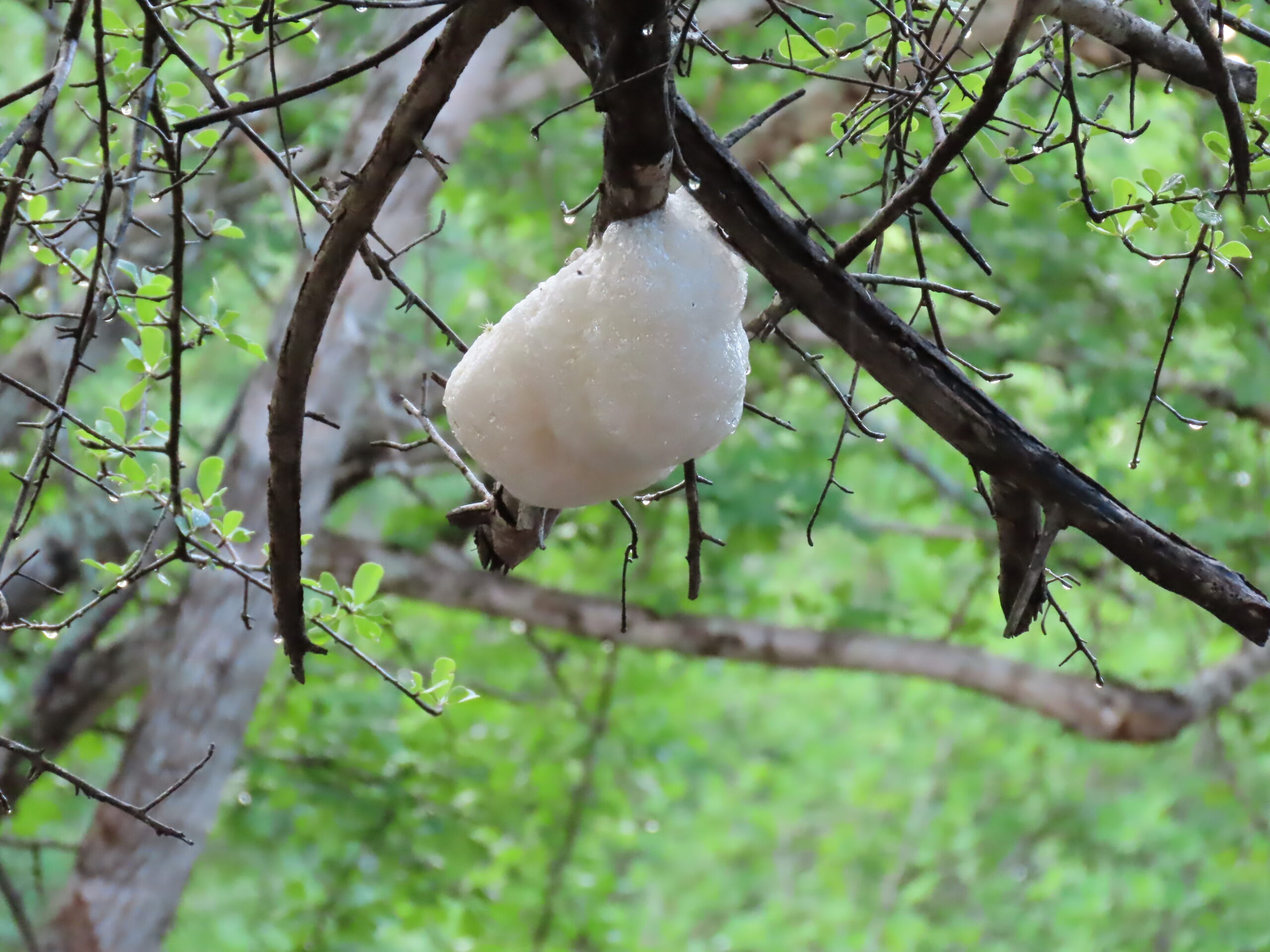
We were enthralled by this event eight years ago, and we’re equally enthralled now. If we’re fortunate to capture the males fertilizing the foam nest again, we’ll make another video and share it here. We keep checking every half hour or so. But, we could easily miss it if it occurs overnight.
The female makes the nest over a body of water. In 2013, she made it over the splash pool. The tadpoles didn’t survive when they landed in the pool due to the chlorine in the water, although we spotted one that survived. This time, the nest is over the cement pond, filled with rainwater. The tadpoles could very well survive when they drop out of the nest to swim in the water as they mature.
The mating sounds, particularly after dark, over the past few weeks, have been earsplitting, continuing well into the night. For some odd reason, although the female frog, the tree, and the pond are outside our bedroom window, they haven’t kept either of us awake. Somehow the sounds of nature, however loud, don’t seem to disturb our sleep.
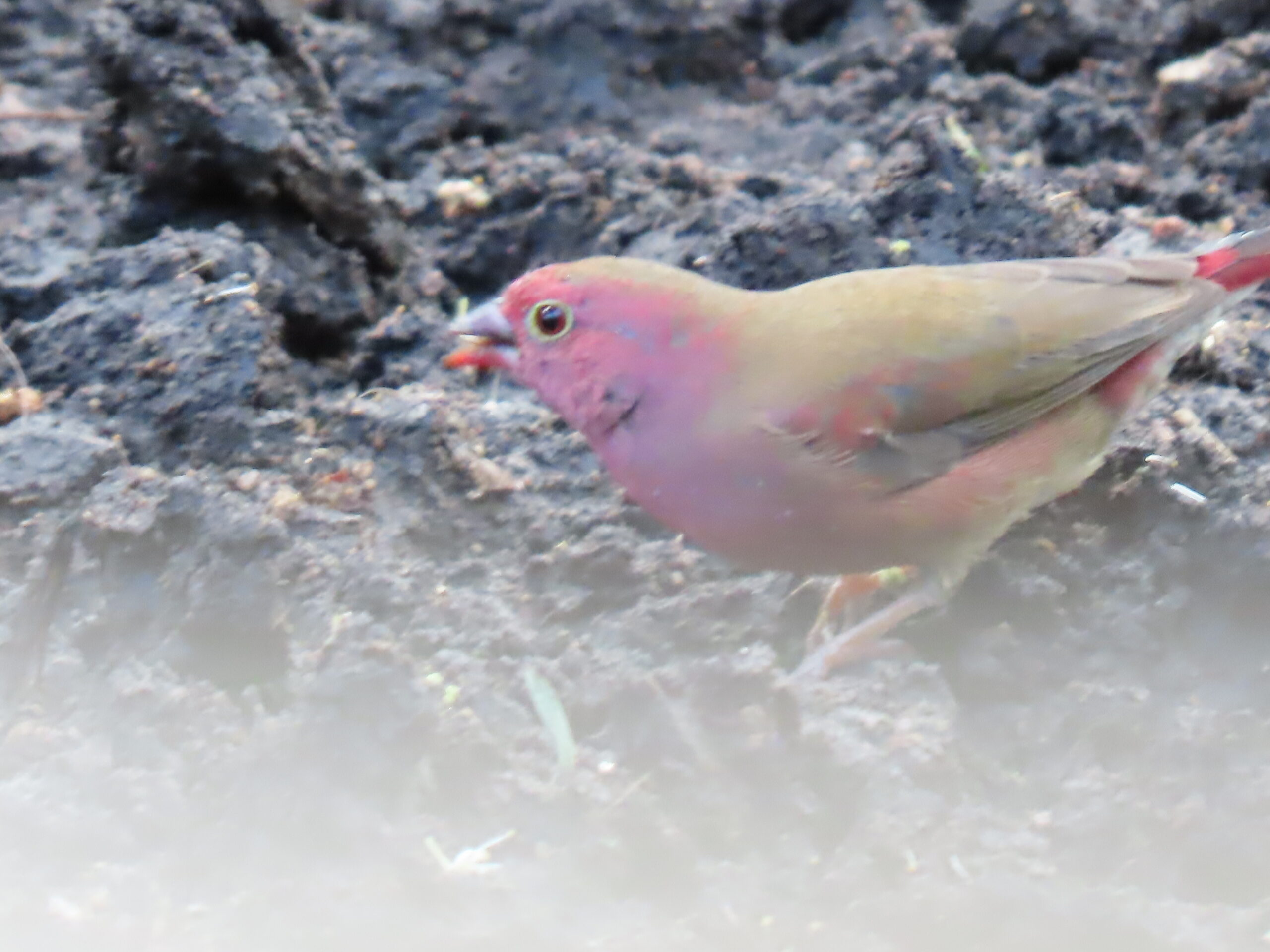
Late yesterday afternoon, we took off for Two Trees on the Crocodile River to meet with Carrie and Jim, our new US travel friends. By the time we arrived at the meeting point, it was pouring rain, preventing us from getting out of the car. When they came a few minutes after us, we all decided to get together at this same site on Thursday (tomorrow) as a quasi celebration for the US holiday, Thanksgiving, which will be observed tomorrow.
Some of our readers have kindly written to us, asking what we’re doing for Thanksgiving, if we’re making pies, and the traditional turkey dinner. First off, we can’t buy canned or fresh pumpkins here in the bush. The few pumpkin pies I’ve made here have been using canned pumpkin Kathy brought here from the US in her luggage. There will be no pumpkin pies this year.
As for a turkey, they may be found in Nelspruit at one or two of the big markets, but we saw no sense in driving for three hours to buy a small turkey, no larger than a good-sized chicken. Then, the ingredients for side dishes aren’t available here either; no fresh cranberries, no marshmallows for the sweet potato casserole, no canned onions for the green bean casserole, no Cool Whip for the fruit whippy, and it goes on and on.
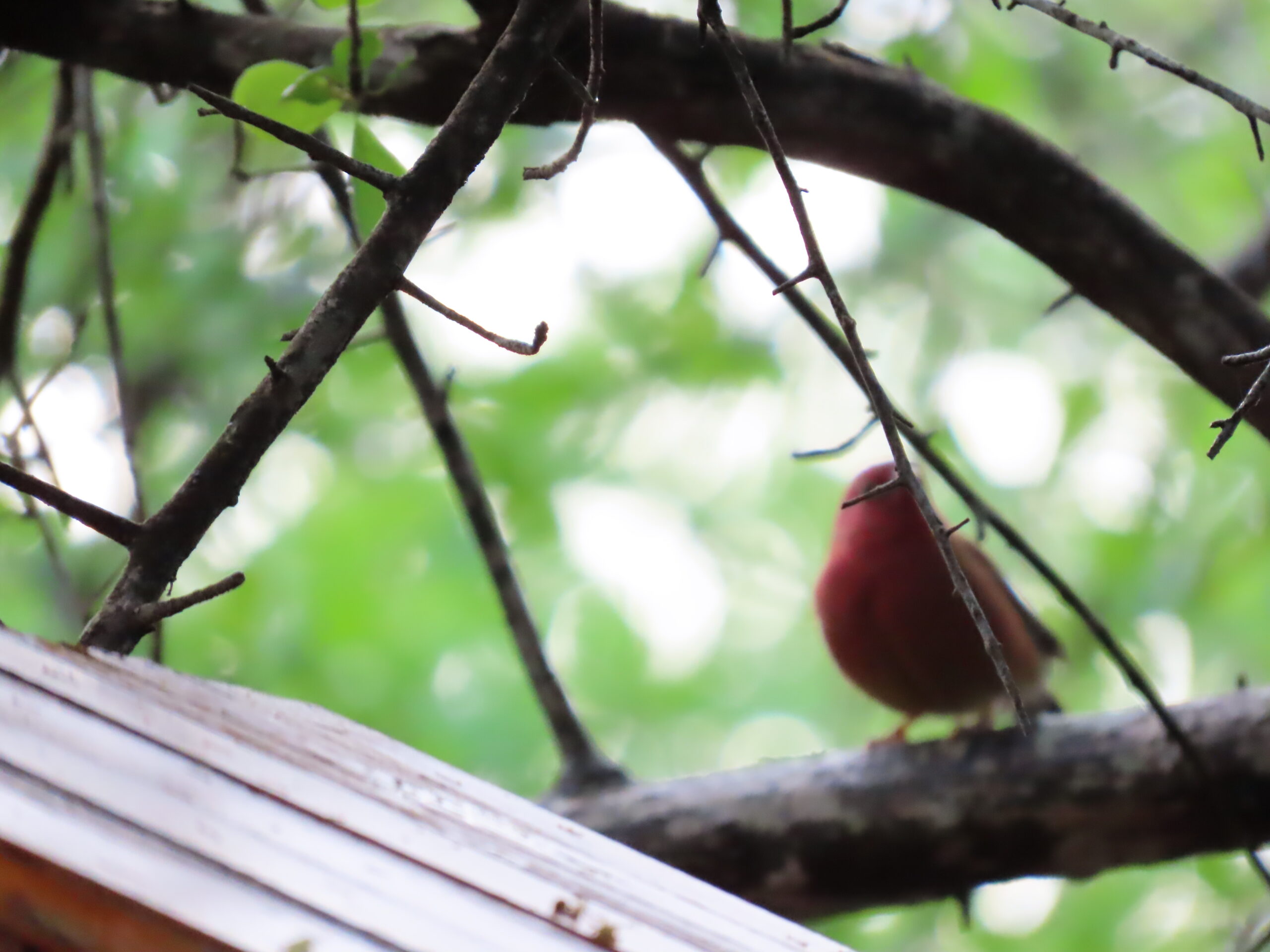
In 2018, we did a Thanksgiving meal for friends, using chickens, as detailed in this post, and side dishes for which Kathy had brought other ingredients from the US, making it all possible. Please click here to see our menu and food photos from that Thanksgiving for 12 guests at the Orange house.
It was so hot during those days, while I prepared many pumpkin pies, rolling the dough in the heat, an impossible task. I’ll never forget my “pie day from hell,” found at this link. Heat and rolling dough for pies don’t go together. It was an experience I’ll never forget, but I got through it.
Much to my surprise, as I sweated up a storm in the heat, I did so with three of my coronary arteries 100% blocked. Less than three months later, I had open-heart surgery, being told it was a miracle I could function at all with only one artery pumping blood to my heart. Lucky, I guess. Grateful, I know for sure.
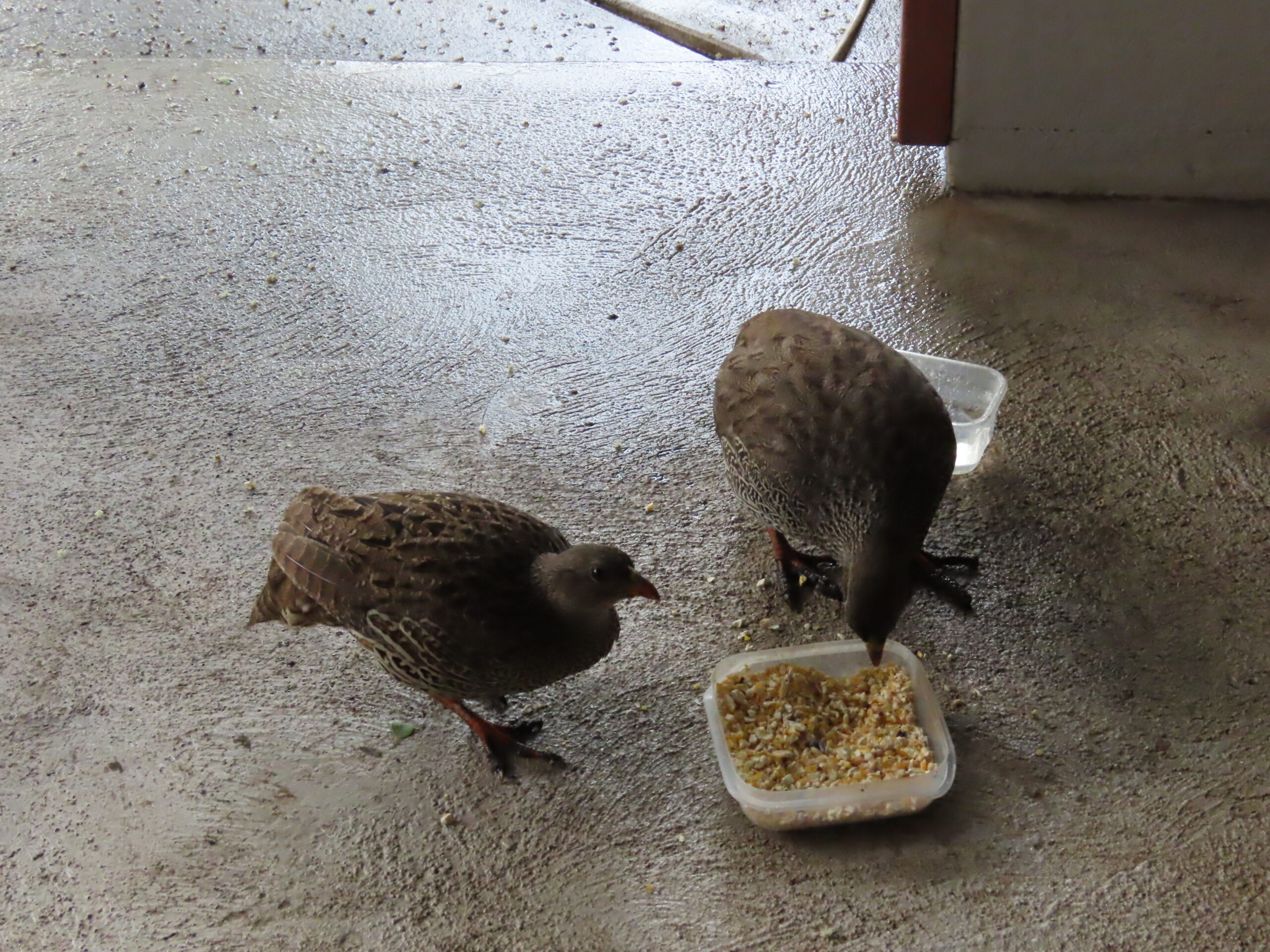
Sure, the traditional foods and festivities were always fun and rewarding, spending time with family and friends. But, now Thanksgiving has a very different meaning for us. It’s not about the food, the wine, and the festivities. It’s all about being thankful. And that is what Thanksgiving is all about.
Without a doubt, we are thankful for so much; our loved ones and friends, our good fortune to be able to continue to travel the world, our health, and of course, each other to revel in the treasures Mother Nature has to offer every day in the bush or wherever we may be at any given time, together, living this extraordinary and exciting life.
For those of you celebrating Thanksgiving in the US, have a blessed holiday and long weekend. For everyone else, may your days be filled with joy and wonder.
Photo from one year ago today, November 24, 2020:
 |
| This photo was posted one year ago today while in lockdown in a hotel in Mumbai, India, on day #246. My dinner at Sails Restaurant in Diani Beach, Kenya, in 2013 was too heavy with oil, very different from the first time I’d ordered this entrée. For more photos, please click here. |

